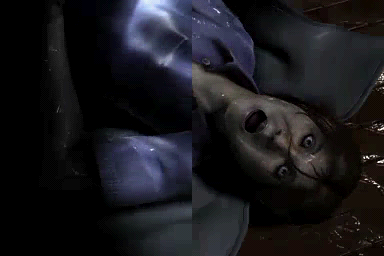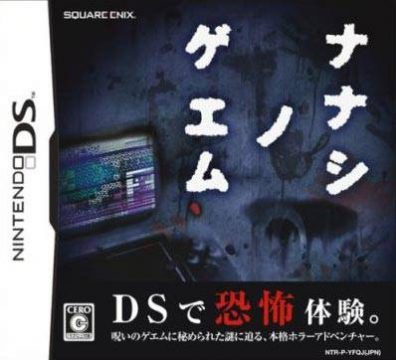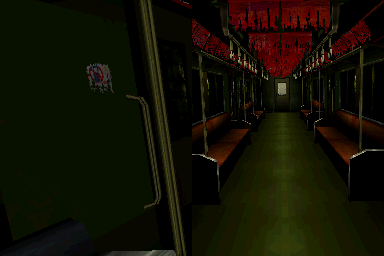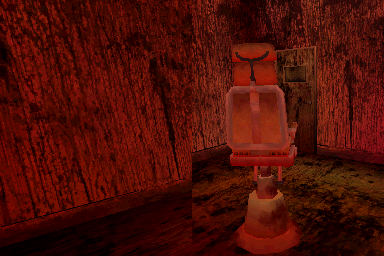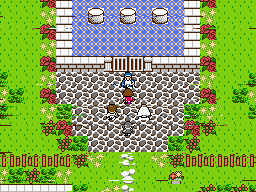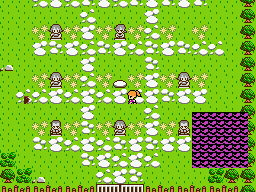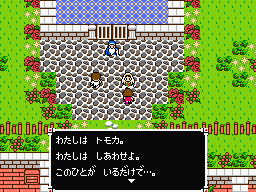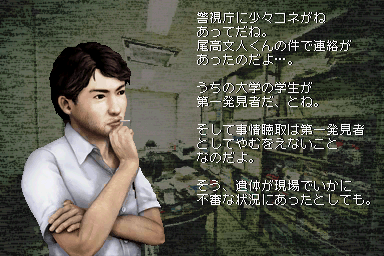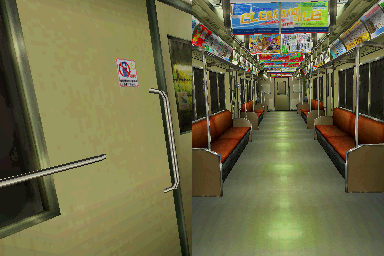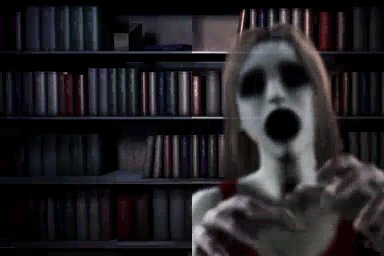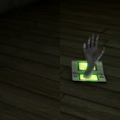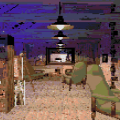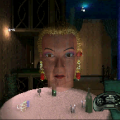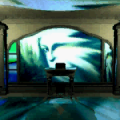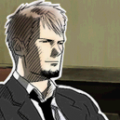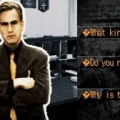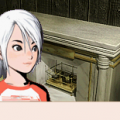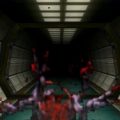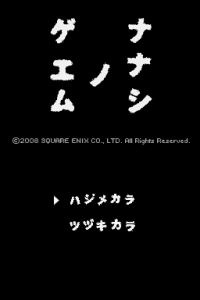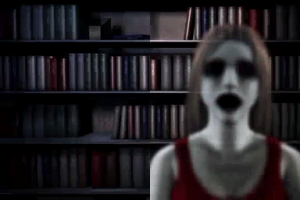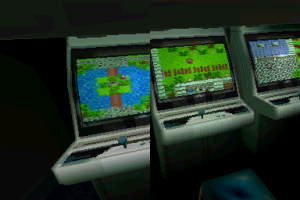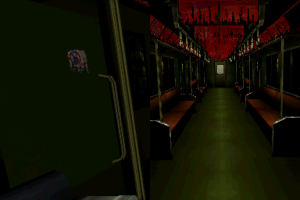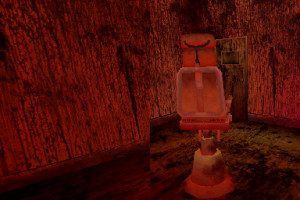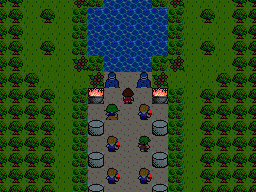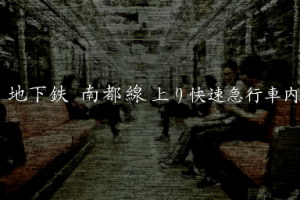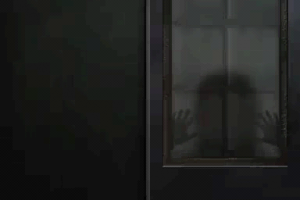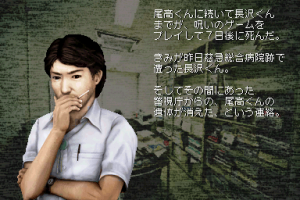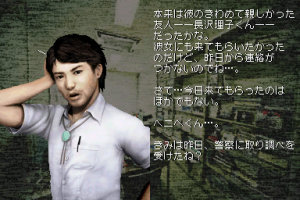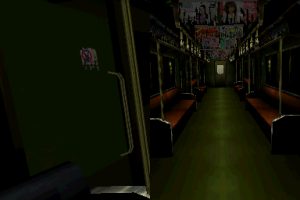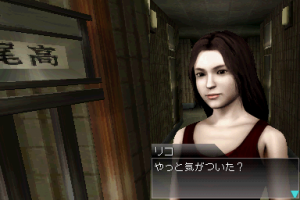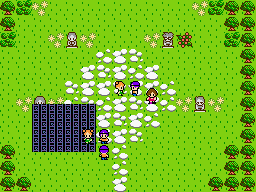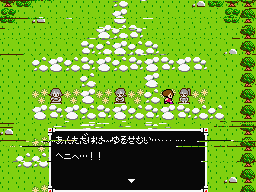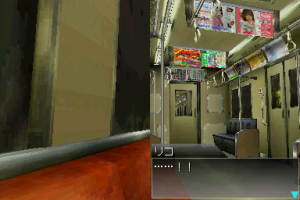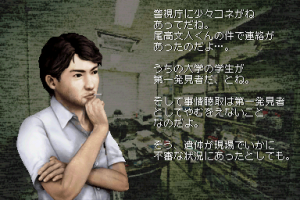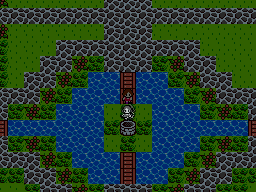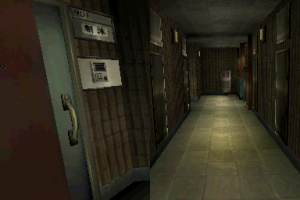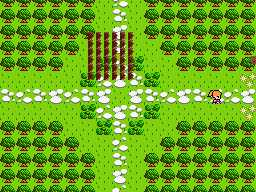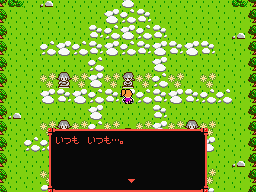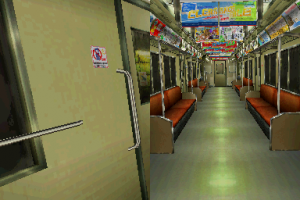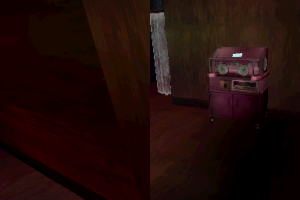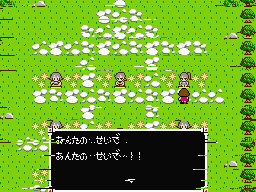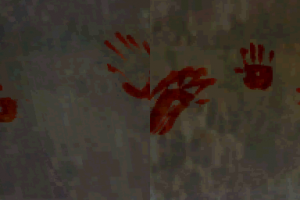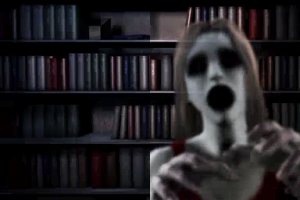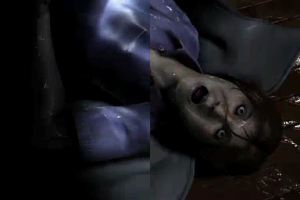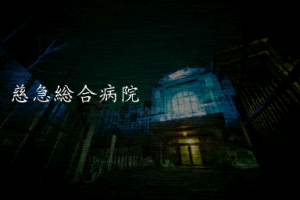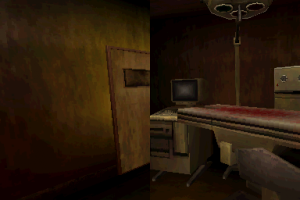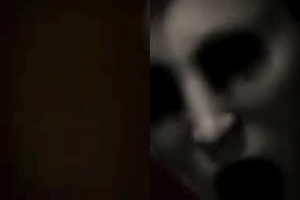- Nanashi no Game
- Nanashi no Game Me
In 2008, Square Enix released Nanashi no Game, a survival horror game for the Nintendo DS. This was a major break from the usual Square Enix role-playing game. The title is generally translated as”Nameless Game,” but it is also a pun, as na-nashi means nameless but “nana-shi” means seven-death, as in seven day death.The game proved popular, and met with surprising demand. It was followed up in 2009 with Nanashi no Game Me (“Nameless Game: The Eye”), also for the DS, and two side releases through DSiware.
The games were never localized outside of Japan, leaving them relatively obscure. They also had a low print run, especially compared to other Square Enix titles. The first game sold 60,000 copies in Japan, exhausting the supply. To put this in perspective, Dragon Quest IX, another Square Enix game for the Nintendo DS, sold over 4 million copies in Japan alone. Neither game has been fan translated as of yet, and the text is necessary to play as it provides hints as well as expanding the story and feel of the game. Luckily, fans have posted text and video walkthroughs online at GameFAQs and Youtube. These might not allow the player to understand every nuance of each game and its intricate story, but they allow you to experience something very unique and get a few scares along the way.
What we have in this series is a clever blend of horror and nostalgia, and is both retro and innovative. It honestly feels like what Silent Hill might be like if it had been designed by Square Enix. Like Moon: Remix RPG Adventure, it manages to combine two very different games into one unique experience. It’s well worth a look.
Neither title ever received an international release. Despite their flaws, Square Enix really had something special there. There is a growing number of games that fit into the same loose, retro horror group, including the free games Yume Nikki and Zaratustra’s Eversion. These games manage to capture that same eerie nostalgia of Nanashi, and would be exceptional even if not available as freeware.
The first nameless game has a simple premise: a cursed video game exists, and anyone who plays the game will die in seven days. While this might sound like a cheap rip-off of The Ring / Ringu, it’s important to remember that this idea is nothing new. Items that doom the user go back a long, long time, from H. P. Lovecraft’s Necronomicon to the Ark of the Covenant in the Hebrew Bible. The designers took this well-known premise and created something special.
There are generally two types of scary in entertainment – sudden scary and slow scary. Sudden scary is when a cat jumps out of a closet or a zombie comes through the window. Slow scary is when a creepy story is combined with an unsettling atmosphere. Nanashi brings both to the table, which should please most people looking for a good horror game.
You begin start out in the real world. These sections of the game are grim and gritty in three dimensions, allowing you to explore some familiar survival horror locations – empty house, subway train, creepy streets, hotel. Everything is rusty or broken. To top it off, the music is oppressive and beautiful, and gives the game a haunting, unsettling feeling. As far as the layout, these places feel like real locations, which is pretty re’reshing. Piles of boxes or (more convincingly) cavernous holes in the floor limit your exploration, and there are plenty of locked doors. It takes some time to get from one place to another, partially because of the size of the level, and partially because of how slowly you move.
The further you get into the story, the more the cursed game haunts you in the real world. Like the alternate reality of William Gibson’s “The Gernsback Continuum”, the nameless game begins to seep and creep into the real world. The game pops up on random computer screens and televisions, and the theme song follows you around. These little touches make for some of the creepiest moments in the entire game. Also as you progress, the real world sections become more and more dangerous. The previous victims of the cursed game are haunting you, and they become increasingly aggressive. Each ghost is introduced in a nice rendered cut scene. The in-game graphics still do them justice, leaving their odd movement and expressions of hell-bent revenge.
Like in Frictional Games’ Amnesia, you are completely helpless against the ghosts. You have no proton pack, no camera obscura, no board with a nail in it. Your only option is to escape or run past them, as being caught by them will instantly kill you. Occasionally a ghost will be seen just standing in place, but this is often a precursor to them ambushing you shortly down the line. On rare occasions they follow a set path, allowing you to dodge them as they do their laps, but there is no feeling of stealth in this action. You might as well be Pac-Man dodging ghosts. There isn’t much beyond trial and error to tell you how to deal with each ghost.
The controls in this setting are interesting – you hold the DS itself like a book, and direct your character with the touchscreen. Touching the center of the screen moves you forward, while touching near the edges of the screen allow you to look around in 360 degrees. The d-pad adds to your movement, allowing you to turn and walk more quickly. You also use the screen to very simply interact with doors, ladders and the like. While the touchscreen provides control, the other screen provides an odd second perspective, giving a stereo view of the game’s environment. As seen in the screenshots, it can be a bit jarring, but after a few minutes of gameplay it becomes quite immersive.
This book-style control is one of the game’s most ambitious elements. Unfortunately, it is probably the most frustrating part of the entire game. Not only do you occasionally get hung up on corners, but taking the time to look around can easily result in your death. The movement is reminiscent of walking in LSD: The Dream Simulator for the PlayStation: you’re prodding along at a snail’s pace. In LSD, you have the ability to run fairly quickly, while in Nanashi no Game pushing up on the D-pad upgrades you from a snail’s pace to a turtle’s. This is also an awkward control, and may cause hand cramps.
Surely the game designers deliberately limited your speed to increase the suspense and the playtime, but the option to actually run would’ve been nice. It’s also difficult to believe that when someone is faced with a death-dealing undead thing they would just break into a brisk power walk until the got stuck on the edge of a counter. On top of all of that, the control scheme can’t be altered. Apparently left-handed players were not considered, as you are forced to control the game in a right-handed configuration. But the real world environments aren’t the reason someone plays Nanashi. They’re icing on the cake that is the retro RPG, which is what really drives the plot forward and entices the heart of most players.
You enter into the RPG at key points in the game’s plot, sometimes involuntarily, sometimes by choice. Your connection to the game is through a portable game system, the TS, a dead ringer for the Nintendo DS, right down to its menu. This device allows you to receive plot-relevant emails, and it also malfunctions slightly in the presence of ghosts, similar to the radio static of the Silent Hill series.
The instant you enter the cursed game’s world, you know that they got it right. It bears more than a passing resemblance to the first Final Fantasy. The theme music is beautiful and sounds so authentic that you would swear you’d heard it before. The graphics don’t just look like an 8-bit role playing game from 1987, they look like how you want to remember 8-bit games looking.
The first 8-bit location you see, and the one where you’ll spend the most time throughout the game, is a small village. Its populated with item shops, an inn, and numerous non-player characters, each repeating a single phrase for eternity.
Despite its authenticity, something is off about this game within a game. It’s glitched, with odd shapes interrupting the landscape with every step you take. You have a mobile device whose interface is set up like a DS – even this screen shows the game with a corrupted name. Characters say and do things game characters would normally never do, and every time you play you feel like there is something going on in the background, something bloody and dark. The beautiful theme is eventually corrupted, becoming a twisted, distorted version of itself.
You spend relatively short stints playing the cursed game, but those trips are very memorable. Characters perform strange rituals and characters die tragically, all illustrated in blocky pixels. One of the 8-bit representations of a spirit even exhibits the shaky head effect, seen for the first time in the movie Jacob’s Ladder and imitated in countless horror films since.
The locations inside the RPG are fairly interesting, including tunnels, forest paths, and a screen full of haunted statues. It’s too bad that the majority of story in this part of Nanashi is told through still portraits with dialogue, your sprite being the only active participant.
The designers make good use the game’s dual nature. Some puzzles are solved using both the real world and the cursed game, and things that happen in the cursed game truly help unravel the mysteries of the plot in the real word. One scene in the cursed game actually mirrors what is happening in the real world, repeating the same events in two dimensions.
The actual gameplay inside the RPG is pretty shallow. You never fight a monster or level up. You can talk to the owner of the item shop, but you have no gold to spend there. There is no inventory and your ability to interact with anything inside the game is extremely limited. It’s the same way in the real world setting. You have no inventory to keep track of, and beyond the rare piece of paper or key, you don’t need to click on anything in the game except for doors.
And that’s the design goal of Nanashi no Game. It’s a story to be experienced and a world to be explored. You don’t battle, the puzzles can barely be called such, and the plot is fairly secondary to the medium with which it is told.
The plot of the game dictates its length: from the time the character plays the first game, he or she (you get to choose the gender, affecting your cursed game sprite) has exactly seven days to live. It’s irrelevant what the character does before he plays the cursed game. And once the curse is resolved by survival or death, we have no further interest. And the days/levels themselves feel pretty short. You are occasionally grateful for that fact, as you are only allowed to save your game between levels.
These seven days pass by quite quickly, and once you finish there isn’t a lot of replayability. They did hide a few items inside the cursed game that, when all are collected, will change the ending. However, you would have to search every inch of the game to find them all, and the changes to the ending are nothing to write home about. For the masochist, there is also a mode you can unlock that turns all of the ghosts invisible.
So the first game has its drawbacks — the controls are imaginative but lacking, the playtime is short, you can only save when you finish a level, and the gameplay is fairly shallow. On the other hand, it’s a fun experience, it delivers some genuine scares and overall creepiness, and it tells a great story. The game’s sequel improves on some of its shortcomings.
Masayoshi Soken wrote the score for Nanashi no Game under the pseudonym Luis Noma, the in-game name of the cursed RPG’s composer. The soundtrack was released through the iTunes in Japan as a 5-track EP (review).
There is a fan translation for the game available.
